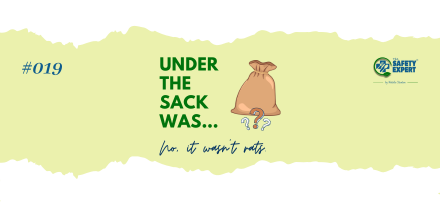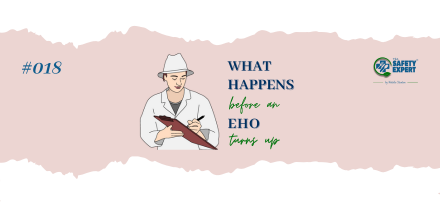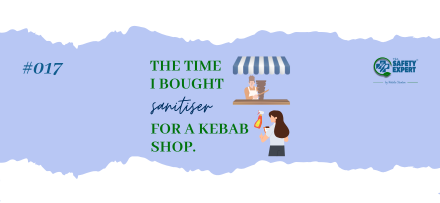A typical day in the life of an EHO (if such a thing exists)
Table of Contents
EHO Story 📩
People often ask what it’s like being an Environmental Health Officer.
They usually imagine a quiet day of clipboard in hand checking fridges, and maybe a polite word about hand washing.
Let me tell you, it’s rarely that simple.
When I worked in local government, a typical week might look something like this:
- Carrying out inspections in restaurants, cafes, takeaways, food manufacturers, schools, care homes, hospitals, home bakers, you name it.
- Scoring and awarding Food Hygiene Ratings.
- Responding to complaints: food poisoning reports, pests in businesses, or something weird like “There’s a condom in my burger”
- Investigating food poisoning notifications.
- Working with other agencies like the police, fire service, Border Agency, or Licensing on joint visits.
- And, of course… admin. Reports, letters, databases, it’s all got to be documented.
But none of this stays neatly in the diary.
📞 Then there’s Friday afternoon…
It always seems to be Friday afternoon when the calls come in.
You’re half an hour from finishing up for the week when someone rings to say,
“There’s a mouse running behind the toaster in a coffee shop.”
Suddenly you’re out the door, trying to catch the tail end of a pest issue (excuse the pun).
🌙 And sometimes, it’s night raids.
Part of the job involved working with multi-agency teams on unannounced nighttime operations.
Our role? To check for serious food safety risks: pest activity, unclean premises etc.
Let’s just say, you can sometimes see a very different side after dark.
⚖️ And then there’s court.
Some weeks, you’d find yourself in court applying for Hygiene Emergency Prohibition Orders, or attending prosecutions for serious breaches.
Preparing statements, presenting evidence, standing in front of magistrates, it’s all part of the job.
🧼 Food Safety Tip: Behind every Food Hygiene Rating is real work
✔️ Inspections are just one part of what EHOs do: A visit might take an hour, but the prep, write-up and follow-up often take much longer.
✔️ EHOs aren’t there to “catch you out”: They’re there to protect the public, support improvement, offer advice and help businesses keep running safely.
✔️ The best outcomes come when businesses engage: If you’re open, honest, and willing to work with your EHO, it’s always a better experience for everyone involved.
The Serious Lesson
No two days as an EHO were ever the same.
You could start the week with a hospital inspection, spend Wednesday dealing with a pest complaint, and end it writing a witness statement for a prosecution.
But what stayed consistent was the goal: to protect public health and support businesses in doing the right thing.
EHOs aren’t out to shut you down. They want you to succeed, safely.
And the more you see them as partners (not problems), the better the result for everyone involved.
Ever wondered what really happens after a complaint or how an EHO prepares for an inspection?
Subscribe to my newsletter!
Get useful food safety tips and special offers directly to your inbox (you can unsubscribe at any time).




